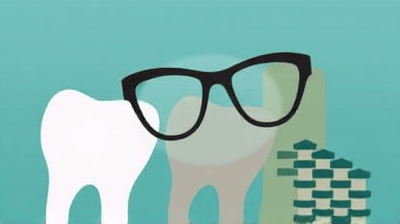Navigating the world of health insurance can be complex, especially when it comes to understanding what is covered under your plan. Among the most common questions people have is whether their health insurance covers dental and vision services. Both dental and vision care are essential components of overall health, yet they are often treated differently than standard medical coverage.

Understanding Health Insurance Basics
What Is Health Insurance?
Health insurance is a contract between an individual and an insurance company that provides financial coverage for medical expenses. This coverage can include routine physician visits, hospital stays, surgeries, prescription medications, and preventive services. Health insurance aims to protect individuals from high medical costs and provide access to necessary healthcare services.
Types of Health Insurance Plans
Health insurance comes in various forms, each with different coverage levels, costs, and benefits:
-
Employer-Sponsored Insurance: Many employers offer health insurance as part of employee benefits. These plans often encompass various medical services, but coverage for dental and vision may vary.
-
Individual Plans: Individuals can purchase health insurance directly from insurance companies or through government marketplaces. These plans may provide comprehensive medical coverage but may not automatically include dental or vision.
-
Government Programs: Medicaid and Medicare are government-funded programs that provide health insurance to specific populations, including low-income individuals and seniors. Coverage options under these programs can vary widely.
The Connection Between Health Insurance and Dental and Vision Care
Are Dental and Vision Services Covered?
Dental and vision care are generally not included in standard health insurance plans and often require separate insurance policies or additional riders. Here are some key factors to consider regarding coverage:
-
Medical Necessity: Health insurance is designed to cover medical services that are deemed medically necessary. Most dental and vision treatments are not classified as medically necessary unless they are related to a specific health issue.
-
Preventive Services: While preventive services are often covered by health insurance (such as annual physicals or vaccinations), dental and vision preventive services usually fall under separate plans.
-
Regulatory Considerations: In many regions, dental and vision care are classified as ancillary services, separate from traditional medical insurance. The Affordable Care Act (ACA) did establish pediatric dental coverage as an essential health benefit, but this applies primarily to children.
Dental Insurance: What’s Included?
Dental insurance specifically covers services related to oral health. Here are typical components of dental insurance plans:
1. Preventive Care
Most dental insurance plans emphasize preventive care to reduce the likelihood of more extensive and costly treatments down the road. Preventive care often includes:
- Routine Check-ups: Regular dental exams, typically every six months.
- Cleanings: Professional teeth cleaning performed by a dental hygienist.
- X-rays: Diagnostic imaging to identify potential dental issues.
2. Basic Services
Basic services are usually covered but may require a copay or coinsurance. These services can include:
- Fillings: Treatment for cavities and minor tooth decay.
- Extractions: Removal of damaged or compromised teeth.
- Periodontal Treatment: Services related to gum disease, such as scaling and root planing.
3. Major Services
Major services usually involve more complex and costly procedures, often subject to higher deductibles. These services may include:
- Crowns: Caps placed over damaged teeth for protection and functionality.
- Bridges: Fixed dental appliances to replace one or more missing teeth.
- Dentures: Removable prosthetics designed for patients missing several or all teeth.
4. Orthodontics
Orthodontic coverage may be included in some dental plans, particularly for children and adolescents. This can include treatments such as:
- Braces: Metal or ceramic devices used to correct tooth misalignment.
- Invisalign: Clear aligners used for addressing dental alignment without traditional braces.
5. Limitations and Exclusions
It’s important to understand the limitations of dental insurance plans. Common exclusions may include:
- Cosmetic Procedures: Treatments solely for cosmetic purposes, such as teeth whitening, may not be covered.
- Pre-existing Conditions: Some insurance plans may have waiting periods for coverage related to pre-existing dental issues.
Vision Insurance: What’s Included?
Vision insurance provides coverage for eye care services, including routine eye exams and corrective lenses. Here’s what to expect from a standard vision insurance plan:
1. Eye Exams
Regular eye exams are typically covered by vision insurance, with most plans allowing one comprehensive exam per year. These exams can detect common vision problems and overall eye health issues.
2. Prescription Eyewear
Vision insurance often covers a portion of the cost for prescription eyewear, including:
- Glasses: Coverage usually includes frames and lenses, with limitations on the amount covered per year.
- Contact Lenses: Many plans offer allowances for contact lenses, often making a distinction between glasses and contact coverage.
3. Preventive Services
Some vision plans may include preventive services, such as vision screenings, to detect potential eye health issues before they become serious.
4. Surgical Procedures
Certain surgical procedures, such as LASIK or cataract surgery, may be partially covered under vision insurance plans, but this can vary widely. It’s essential to check each plan’s specifics.
5. Limitations and Exclusions
Vision insurance plans also come with restrictions. Common exclusions may include:
- Cosmetic Lenses: Specialty lenses, such as tinted or designer frames, may not be covered.
- Non-Prescription Sunglasses: Sunglasses without a prescription typically do not qualify for coverage.

Why Separate Coverage for Dental and Vision?
1. Historical Context
Historically, dental and vision care developed as separate entities from traditional medical care. This separation continues in how insurance plans are structured today. Dental and vision care are often viewed as additional, non-essential services, leading to their exclusion from general health insurance plans.
2. Different Providers
Dental and vision care are typically provided by different types of healthcare professionals. Dentists focus exclusively on oral health, while optometrists and ophthalmologists specialize in eye health. This delineation reinforces the separateness of insurance coverage.
3. Cost Structure
Dental and vision care are often considered ancillary services, leading to different cost structures. Health insurance plans generally emphasize coverage for serious medical issues, while dental and vision insurers focus on preventive and routine care.
How to Obtain Dental and Vision Coverage
Given that dental and vision services often require separate insurance, individuals should consider the following options:
1. Employer-Sponsored Plans
Many employers offer dental and vision insurance as part of their benefits packages. If you are employed, check with your human resources department to understand the coverage options available to you.
2. Individual Insurance Plans
If you are self-employed or your employer does not provide coverage, you can purchase individual dental and vision insurance plans. Online marketplaces allow you to compare options and select plans tailored to your needs.
3. Combination Plans
Some insurers offer combination plans that provide coverage for both dental and vision services. These plans may offer more comprehensive coverage and potentially lower premiums than purchasing separate plans.
4. Medicaid and Medicare
For qualifying individuals, Medicaid and Medicare may provide limited dental and vision coverage. Eligibility requirements and specific coverage options vary by state and program.
Choosing the Right Coverage
Selecting the right dental and vision insurance coverage requires careful consideration of various factors:
1. Assess Your Needs
Consider your individual oral and eye health needs. If you have existing dental issues or require corrective lenses, choose plans that provide comprehensive coverage for those services.
2. Review Plan Details
When evaluating insurance plans, check the specifics of what is covered, including copays, deductibles, and limits on services. Be aware of waiting periods for specific treatments or services.
3. Network Providers
Check whether your preferred dental and vision providers are in-network with the insurance plans you are considering. Choosing in-network providers can help reduce out-of-pocket costs.
4. Compare Costs
When comparing plans, consider both monthly premiums and potential out-of-pocket expenses. A higher premium may be worth it if it results in lower co-pays and comprehensive coverage for necessary services.
5. Consider Additional Benefits
Some plans may offer additional benefits, such as discounts on certain treatments, wellness programs, or coverage for preventive care. These features can enhance the overall value of the plan.
Conclusion
Understanding the relationship between health insurance, dental, and vision coverage is essential for making informed decisions about your overall health care. While dental and vision services are often not included in traditional health insurance plans, separate coverage options are available to meet these specific needs.
By comprehensively assessing your dental and vision care requirements and carefully reviewing available insurance options, you can choose coverage that provides the support you need for optimal health. Whether through employer-sponsored plans, individual policies, or government programs, ensuring access to necessary dental and vision services can lead to better health outcomes and an improved quality of life.



